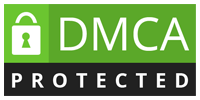Using the library from: https://github.com/pmengal/MailSystem.NET
Here is my complete code sample:
Email Repository
using System.Collections.Generic;
using System.Linq;
using ActiveUp.Net.Mail;
namespace GmailReadImapEmail
{
public class MailRepository
{
private Imap4Client client;
public MailRepository(string mailServer, int port, bool ssl, string login, string password)
{
if (ssl)
Client.ConnectSsl(mailServer, port);
else
Client.Connect(mailServer, port);
Client.Login(login, password);
}
public IEnumerable<Message> GetAllMails(string mailBox)
{
return GetMails(mailBox, "ALL").Cast<Message>();
}
public IEnumerable<Message> GetUnreadMails(string mailBox)
{
return GetMails(mailBox, "UNSEEN").Cast<Message>();
}
protected Imap4Client Client
{
get { return client ?? (client = new Imap4Client()); }
}
private MessageCollection GetMails(string mailBox, string searchPhrase)
{
Mailbox mails = Client.SelectMailbox(mailBox);
MessageCollection messages = mails.SearchParse(searchPhrase);
return messages;
}
}
}
Usage
[TestMethod]
public void ReadImap()
{
var mailRepository = new MailRepository(
"imap.gmail.com",
993,
true,
"yourEmailAddress@gmail.com",
"yourPassword"
);
var emailList = mailRepository.GetAllMails("inbox");
foreach (Message email in emailList)
{
Console.WriteLine("<p>{0}: {1}</p><p>{2}</p>", email.From, email.Subject, email.BodyHtml.Text);
if (email.Attachments.Count > 0)
{
foreach (MimePart attachment in email.Attachments)
{
Console.WriteLine("<p>Attachment: {0} {1}</p>", attachment.ContentName, attachment.ContentType.MimeType);
}
}
}
}
Another example, this time using MailKit(https://github.com/jstedfast/MailKit)
public class MailRepository : IMailRepository
{
private readonly string mailServer, login, password;
private readonly int port;
private readonly bool ssl;
public MailRepository(string mailServer, int port, bool ssl, string login, string password)
{
this.mailServer = mailServer;
this.port = port;
this.ssl = ssl;
this.login = login;
this.password = password;
}
public IEnumerable<string> GetUnreadMails()
{
var messages = new List<string>();
using (var client = new ImapClient())
{
client.Connect(mailServer, port, ssl);
// Note: since we don't have an OAuth2 token, disable
// the XOAUTH2 authentication mechanism.
client.AuthenticationMechanisms.Remove("XOAUTH2");
client.Authenticate(login, password);
// The Inbox folder is always available on all IMAP servers...
var inbox = client.Inbox;
inbox.Open(FolderAccess.ReadOnly);
var results = inbox.Search(SearchOptions.All, SearchQuery.Not(SearchQuery.Seen));
foreach (var uniqueId in results.UniqueIds)
{
var message = inbox.GetMessage(uniqueId);
messages.Add(message.HtmlBody);
//Mark message as read
//inbox.AddFlags(uniqueId, MessageFlags.Seen, true);
}
client.Disconnect(true);
}
return messages;
}
public IEnumerable<string> GetAllMails()
{
var messages = new List<string>();
using (var client = new ImapClient())
{
client.Connect(mailServer, port, ssl);
// Note: since we don't have an OAuth2 token, disable
// the XOAUTH2 authentication mechanism.
client.AuthenticationMechanisms.Remove("XOAUTH2");
client.Authenticate(login, password);
// The Inbox folder is always available on all IMAP servers...
var inbox = client.Inbox;
inbox.Open(FolderAccess.ReadOnly);
var results = inbox.Search(SearchOptions.All, SearchQuery.NotSeen);
foreach (var uniqueId in results.UniqueIds)
{
var message = inbox.GetMessage(uniqueId);
messages.Add(message.HtmlBody);
//Mark message as read
//inbox.AddFlags(uniqueId, MessageFlags.Seen, true);
}
client.Disconnect(true);
}
return messages;
}
}
Usage
[Test]
public void GetAllEmails()
{
var mailRepository = new MailRepository("imap.gmail.com", 993, true, "YOUREMAILHERE@gmail.com", "YOURPASSWORDHERE");
var allEmails = mailRepository.GetAllMails();
foreach(var email in allEmails)
{
Console.WriteLine(email);
}
Assert.IsTrue(allEmails.ToList().Any());
}
{
private readonly string mailServer, login, password;
private readonly int port;
private readonly bool ssl;
public MailRepository(string mailServer, int port, bool ssl, string login, string password)
{
this.mailServer = mailServer;
this.port = port;
this.ssl = ssl;
this.login = login;
this.password = password;
}
public IEnumerable<string> GetUnreadMails()
{
var messages = new List<string>();
using (var client = new ImapClient())
{
client.Connect(mailServer, port, ssl);
// Note: since we don't have an OAuth2 token, disable
// the XOAUTH2 authentication mechanism.
client.AuthenticationMechanisms.Remove("XOAUTH2");
client.Authenticate(login, password);
// The Inbox folder is always available on all IMAP servers...
var inbox = client.Inbox;
inbox.Open(FolderAccess.ReadOnly);
var results = inbox.Search(SearchOptions.All, SearchQuery.Not(SearchQuery.Seen));
foreach (var uniqueId in results.UniqueIds)
{
var message = inbox.GetMessage(uniqueId);
messages.Add(message.HtmlBody);
//Mark message as read
//inbox.AddFlags(uniqueId, MessageFlags.Seen, true);
}
client.Disconnect(true);
}
return messages;
}
public IEnumerable<string> GetAllMails()
{
var messages = new List<string>();
using (var client = new ImapClient())
{
client.Connect(mailServer, port, ssl);
// Note: since we don't have an OAuth2 token, disable
// the XOAUTH2 authentication mechanism.
client.AuthenticationMechanisms.Remove("XOAUTH2");
client.Authenticate(login, password);
// The Inbox folder is always available on all IMAP servers...
var inbox = client.Inbox;
inbox.Open(FolderAccess.ReadOnly);
var results = inbox.Search(SearchOptions.All, SearchQuery.NotSeen);
foreach (var uniqueId in results.UniqueIds)
{
var message = inbox.GetMessage(uniqueId);
messages.Add(message.HtmlBody);
//Mark message as read
//inbox.AddFlags(uniqueId, MessageFlags.Seen, true);
}
client.Disconnect(true);
}
return messages;
}
}
Usage
[Test]
public void GetAllEmails()
{
var mailRepository = new MailRepository("imap.gmail.com", 993, true, "YOUREMAILHERE@gmail.com", "YOURPASSWORDHERE");
var allEmails = mailRepository.GetAllMails();
foreach(var email in allEmails)
{
Console.WriteLine(email);
}
Assert.IsTrue(allEmails.ToList().Any());
}
You can read the data from API that Gmail has provided here: https://mail.google.com/mail/feed/atom
The response in XML format can be handled by the code below:
try {
System.Net.WebClient objClient = new System.Net.WebClient();
string response;
string title;
string summary;
//Creating a new xml document
XmlDocument doc = new XmlDocument();
//Logging in Gmail server to get data
objClient.Credentials = new System.Net.NetworkCredential("Email", "Password");
//reading data and converting to string
response = Encoding.UTF8.GetString(
objClient.DownloadData(@"https://mail.google.com/mail/feed/atom"));
response = response.Replace(
@"<feed version=""0.3"" xmlns=""http://purl.org/atom/ns#"">", @"<feed>");
//loading into an XML so we can get information easily
doc.LoadXml(response);
//nr of emails
var nr = doc.SelectSingleNode(@"/feed/fullcount").InnerText;
//Reading the title and the summary for every email
foreach (XmlNode node in doc.SelectNodes(@"/feed/entry")) {
title = node.SelectSingleNode("title").InnerText;
summary = node.SelectSingleNode("summary").InnerText;
}
} catch (Exception exe) {
MessageBox.Show("Check your network connection");
}
#viastudy












.gif)
0 Comments